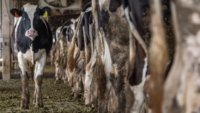EFSA Report: Antibiotics Are Now Lower in Food-Producing Animals Than in Humans

According to the latest report published by the European Food Safety Authority (EFSA), the European Medicines Agency (EMA), and the European Centre for Disease Prevention and Control (ECDC), the use of antibiotics has decreased and is now lower in food-producing animals than in humans.
The report from the three EU agencies provides data on antibiotic consumption and development of antimicrobial resistance (AMR) in Europe for 2016–2018.
Measure taken at country level to reduce use of antibiotics are proving to be effective, as suggests the significant fall in antibiotic use in food-producing animals.
A type of antibiotics called polymyxins, which includes colistin, had its usage drop by nearly half between 2016 and 2018 in food-producing animals. This is a good development, as polymyxins are also used in hospitals for patients infected with mutidrug-resistant bacteria.
The report details that the use of carbapenems, third- and fourth-generation cephalosporins and quinolones in humans is associated with resistance to these antibiotics in Escherichia coli infections in humans. Similar dynamics were found for food-producing animals.
The report also correlates links between antimicrobial consumption in animals and AMR in bacteria from food-producing animals, which in turn is associated with AMR in bacteria from humans. An example of this is Campylobacter spp., which are found in food-producing animals and can cause foodborne infections in human. According to experts, there is an association between resistance in these bacteria in animals and resistance in the same bacteria in humans.
AMR is a global public health problem that represents an economic burden to countries. The approach implemented through the cooperation of EFSA, EMA, and ECDC and the results given in this report call for continued efforts to tackle AMR at national, EU, and a global level across the healthcare sectors.
Looking for a reprint of this article?
From high-res PDFs to custom plaques, order your copy today!





